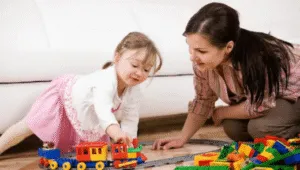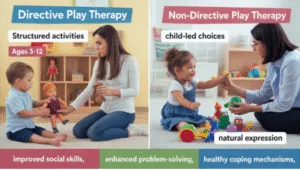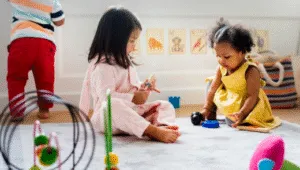Certified play therapists quickly recognize how children instinctively gravitate toward specific toys—dolls, sand trays, miniature figures—to communicate feelings they cannot yet articulate, making Play Therapy for Kids a dynamic avenue where suppressed emotions and traumatic experiences become revelatory through symbolic play rather than traditional talk therapies. Licensed mental health professional
sionals trained in this therapeutic process observe how withdrawn, aggressive, or anxious young children naturally express themselves through games, arts and crafts, and role-playing, transforming clinical settings into a safe space for emotional exploration.
What distinguishes Play Therapy for Kids from conventional psychological treatment is how skilled practitioners affiliated with the Association for Play Therapy facilitate either directive approaches—where counselors guide the session toward particular goals like anger management or grief processing—or non-directive child-centered methods that empower children to choose their activities while maintaining total control over self-expression. Play Therapy for Kids proves highly effective across various ages (infants, toddlers, teenagers) and circumstances, addressing everything from behavioral problems to anxiety coping, as therapists apply strategic tools and therapeutic themes tailored to each child’s needs, ultimately providing a comforting environment where play serves as a bridge to healing.
Understanding Play Therapy for Kids: A Guide for Parents
Most parents assume Play Therapy for Kids follows structured sessions where therapists simply observe children using toys, but the reality involves deep insights through the child’s interaction with carefully selected play therapy tools that range from storytelling cards to sand tray therapy. While physical therapy helps kids with motor challenges, Play Therapy for Kids becomes a psychological treatment where licensed psychologists or mental health professional practitioners can glean a profound understanding of trauma processing through the child’s behavior during role-playing games and sensory play, which, unlike regular play, serves as the language of children who struggle to articulate feelings verbally.
Recognizing how professionals interpret each item a child interacts with—whether action figures during directive play therapy or art supplies in non-directive therapy—enables them to guide difficult emotions while developing empathy and teaching children to manage both emotional trauma and mental trauma that might surface during early stages of treatment. Looking beyond general play, Play Therapy for Kids provides an effective therapeutic environment where the CCPT (child-centered play therapy) approach allows the child to lead by choosing how they express their thoughts naturally, which helps them process past trauma without pressure, while a play therapist makes observations and reflective comments, such as acknowledging when their picture looks sad.
Enrolling your child in 20 play therapy sessions at a clinic with a dedicated play area and posters featuring play therapy themes can deliver positive results in alleviating anxiety, depression symptoms, managing stress, and building stronger family relationships—especially when family members participate in sessions that adhere to either 30 or 60-minute sessions weekly. The role of reputable play therapy association certified therapists who’ve completed additional training through accredited courses and supervised practice becomes evident when they use specific techniques like ropes, toy guns to release anger, frustration, or props to represent family members, all while harnessing the power of play that enhances therapeutic engagement and fosters healthier creative coping mechanisms for managing challenges effectively.

What Types of Play Therapy are Available?
Play Therapy for Kids takes form through directive approaches where therapists introduce structured activities aiming to elicit and address specific issues—a directive session might assign a doll to help a child struggling with anger management understand how the doll feels when it gets angry, using guidance and interpretation to encourage emotional regulation. This method proves particularly effective for children requiring speech delay activities, as the therapeutic process facilitates enhanced emotional expression through non-verbal communication of feelings,while the therapist observes how they interact and respond to authority figures during guided play.
Play Therapy for Kids also entirely embraces unstructured, non-directive formats where the child can choose their own games and tell the practitioner if they’re feeling sad without attached interpretation—this child-centered approach leverages the natural tendency of children to work through emotional issues and mental issues by utilizing their natural love for play-based therapy.
Play Therapy for Kids in clinical practice offers numerous benefits, including improved social skills through cooperative play, enhanced problem-solving skills that encourage children to think creatively and resolve conflicts, while creating a supportive healing environment where they develop healthy coping mechanisms, take responsibility, remain accountable for behaviors, show respect for others, and become more expressive in enjoying life.
Key Distinctions:
- Directive approaches foster therapeutic interventions with assigned activities primarily aimed at children aged 3 to 12 years old
- Child-centered sessions allow entirely unstructured choices where the person naturally expresses feelings
- Both formats help develop better interaction with peers and adults through social skills activities

What Makes Play Therapy Beneficial?
When observing Play Therapy for Kids across various ages, I’ve found that potential benefits extend beyond the therapeutic goals most parents initially seek. Studies consistently show dozens of positive impact areas: children gain adequate skills for emotional challenges, siblings often join sessions to enhance family dynamics, and even older children who experienced trauma or sexual abuse can relax into a comfortable headspace where the healing process becomes applying principles through real-life practice.
The purpose serves multiple therapeutic engagement levels—licensed therapists typically facilitate this type of intervention by thoughtfully selecting crafts, storytelling, and materials that align with each child’s experiences, depending on whether they’re undergoing treatment for anxiety, behavioral issues, or specific situations that require more advanced choices in effective implementation.
Play Therapy for Kids acts as an excellent socialization tool where mental health professionals with specialized training programs can thoroughly address the following conditions while children take turns, make connections, and use play to respond better than traditional therapy structures allow—ultimately reducing symptoms and building healthier coping mechanisms that positively impact their world and deepen their skill set for managing emotional expression throughout child therapy.

What Does This All Mean?
Play Therapy for Kids continues evolving as a dedicated practice where school counselors and child psychologists work alongside children’s parents to help children explore emotions through simple yet effective support, taking time to understand each child’s progress while integrating cognitive and social skills that foster better relationships. The association between real-life experience and session’s themes directly involves how play therapists typically employ different purposes—from enhancing children’s listening skills to supporting broader developmental milestones—using both structure and common play therapy benefits that vary in frequency and length but usually occur with ethical standards and best practices set by organizations specializing in this beneficial field.
Play Therapy for Kids has shown long-term results through an early play therapy study and a 2017 study that outlines differences in how characters can teach children coping skills, primarily benefiting ages 3 to 12, yet can apply to older kids and adults who benefit from deciding to unwind and put themselves in relaxing scenarios where they break the ice through interpretation and reinforce healing.
When shortlisting play therapists, consider their specific training, certification, education, additional instruction from specialized clinic programs, and experience treating children or older children—ask during an initial meeting if they’re willing to invest in crafting materials, literature, and content that enhance practice, then schedule another meeting to tell them about anything that could fit your needs, whether interested in becoming more involved, seeking reliable play therapists, or deciding to supplement with child’s
play-based therapy that resolve problems through two specific approaches offering effective support at a medical practitioner level, changing how we act, step in, and provide healing while developing resilience rather than reliving trauma, and finally invite exploration through using themes that suggest new pathways where mentioned following structures create space for fostering growth—ultimately, Play Therapy for Kids remains a cornerstone practice worth exploring further through coping skills worksheets to deepen understanding.
